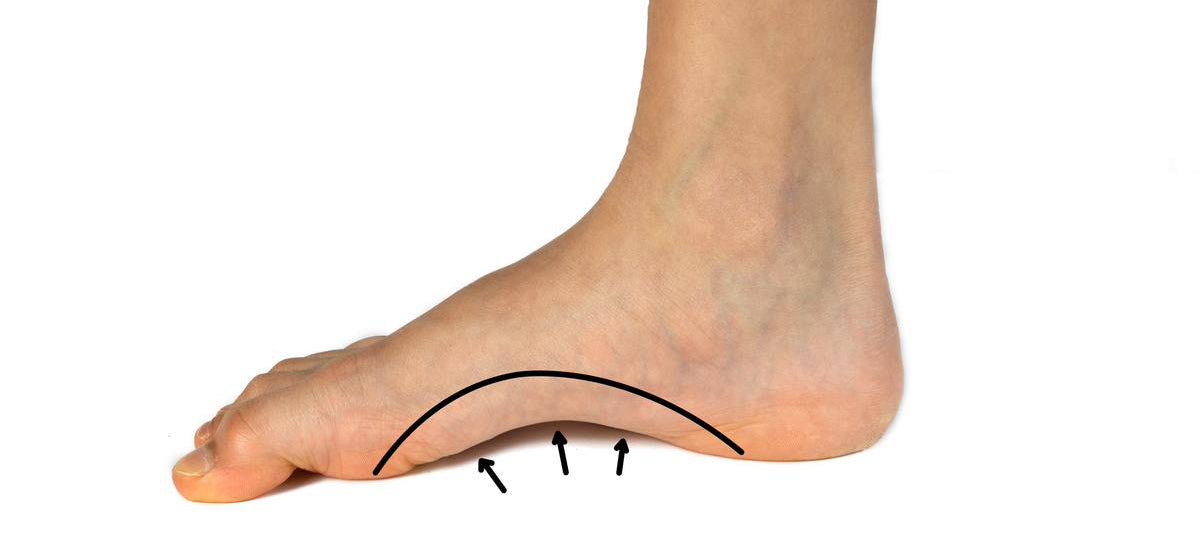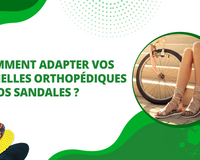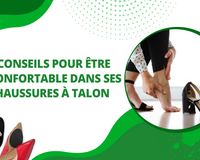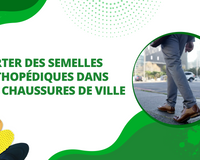Introduction
Called archthe arch of the foot is the area between the metatarsals and the heel. Used for support when walking, an arch is painless. However, if the arch of the foot is affected, this can lead to problems with sunken feet.
Unlike valgus flatfoot, valgus hollowfoot is very rare. Pain in the hollow of the foot is characterized by an accentuated curvature of the foot. arch of the foot. Hollowfoot disease is a deformity of the plantar arch that affects either the back of the foot, the front of the foot, or both.
Hollowfoot is generally pathological only if the arch deformity is present at weight-bearing, unlike arched feet, which are physiological hollowfeet. In view of specific research, hollowfoot pain may be genetic or neurological in origin.
Neurological hollow foot: what it is

Between neuromuscular, developmental or congenital origins, hollowfoot can also be caused by a neurological disease. The best-known form of pain under the hollow of the foot is "hollow varus equinus foot". Hollowfoot disease can worsen over time. When adult neurological hollowfoot becomes persistent, it's crucial to consult a specialist. neurologist as soon as possible.
However, there is also idiopathic clubfoot, the cause of which cannot be explained by any of the above-mentioned factors.
Between neuromuscular, developmental or congenital origins, hollowfoot can also be caused by a neurological disease. The best-known form of pain under the hollow of the foot is "hollow varus equinus foot". Hollowfoot disease can worsen over time. When adult neurological hollowfoot becomes persistent, it's crucial to consult a specialist. neurologist as soon as possible.
However, there is also idiopathic clubfoot, the cause of which cannot be explained by any of the above-mentioned factors.
Hollow foot cause: where does it come from?
Apart from neurological disorders, hollowfoot syndrome can also be caused by underlying factors such as :
- congenital spina bifida anomaly
- poliomyelitis
- Parkinson's disease
- Cerebral palsy
- Charcot-marie-Tooth disease
- Stroke sequence
- Muscular dystrophy
- Myelomeningocele
- Congenital neuropathy
Often asymptomatic between 0 and 3 years of age, a hollow foot in children (over 3 years of age) requires rapid medical attention. medical attention by a neurological specialist.
Hollow foot symptom: what you need to know
This pathology which can cause pain in the hollow of the foot, presents the following symptoms:
- Repetitive sprains
- Bumps over the foot due to excessive curvature
- Sensations of calf cramps
- Friction in the arch of the foot
- Shoes that are difficult to put on
- Higher-than-average arch curvature
- Pain in hip, knee and ankle joints
- Burning sensation and tingling of toes when walking
As soon as symptoms such as pain in the hollow of the foot are felt, it is essential to consult a physician. doctor to avoid complications.
Hollow foot consequences: What are the complications?
If a hollow foot with severe symptoms is not managed or treated properly, it can lead to a number of consequences:
- Hollow varus foot due to the tendon bone tilting outwards. This leads to postural problems, creating imbalance and ankle instability.
- Excessive curvature of the toes can lead to claw toes. As the condition worsens, claw toes dig into your shoes, wearing them out unusually quickly.
- Plantar fasciitis manifests itself as a thorn in the heel.
- Metatarsalgia
- Pain in the big toe, which can even turn into a hollow valgus foot.
If you think you have a hollow foot, take precautions quickly to avoid serious damage. complications. Apart from arch pain, this condition can even lead to back pain.
Hollow foot and back pain: what you need to know

When the deformity is directed towards the back of the foot, hollowfoot can lead to tendon misalignment thus limiting dorsal flexion of the ankle. The deeper the arch of the foot, the more unbearable forefoot support becomes.
This can lead to hip pain, lower back pain or even leg lameness. Over time, a arthrosis of the metatarsal heads.
This pathology causes the soles of your shoes to break down more quickly.
Hollow foot treatment: How to treat this condition?
Hollow foot is a foot deformity that needs to be treated as soon as it becomes painful.
Use of hollow foot insoles
An insole for sunken feet is advantageous and improves stability of people suffering from sunken feet. These orthopedic insoles for sunken feet enable correct position and relieve pain.
An arch support for the hollow foot helps to create balance when walking, thus avoiding shocks. In addition to orthopedic insoles for sunken feet, we also offer women's insoles for sunken feet. support and stability arch support for women's feet.
Wearing shoes for sunken feet
Do you suffer from foot pain and don't know what kind of footwear to wear? No need to worry. The famous orthopedic shoes for sunken feet are a medical solution to remedy diseased hollow feet.
Offering support and stability to the arch, a hollowfoot shoe helps reduce the space between the ground and the arch of the foot, thereby reducing foot pain.
Hollow foot therapy: an effective solution!
In addition to wearing hollowfoot insoles, physiotherapy can also help to correct the deformities caused by hollowfoot pain. Treatment in physiotherapy treatment consists of specific exercises designed to strengthen defective muscles, correct retracted muscles and even maintain joint mobility.
It is also important to introduce a gait re-education program.
Hollow foot exercises to relieve pain
In addition to the above-mentioned aids for curing the pain caused by sunken feet, there are a number of other exercises that can be used to relieve the pain. suitable exercises to accompany the treatment. These include toe-lifting, foot flexing, foot pushing, heel lifting, ball massage, foot and ankle self-massage, toe spreading and hollow foot stretching. recommended exercises by doctors to relieve sunken foot pain.
Accessories to relieve sunken feet
There are a number of accessories that can also help relieve the pain and deformity of sunken feet.
Running shoes for sunken feet
For runners, for example, or for people who exercise for long periods of time. walksthere are running shoes for sunken feet. With an adapted hollow-foot sole, these shoes enable you to cushioning and flexibility and soften the impact on joints during movement.
Hollow-foot sneaker
To avoid the risk of increasing hollow foot deformities, choose the right type and size of sneaker. Sneakers with a wide, airy front provide space for the toes. A consistent insole provides support and comfort for the arch of the foot.
Hollow-foot ski boot
For amateur and professional skiers alike who have to cope with the pain caused by sunken feet, there are special ski boots to help relieve the pain. To enjoy skiing with ease, it's essential to buy a boot that's adapted, comfortable and made-to-measure.
Hollow foot surgery: what types of operation are involved?

When the pathology of the hollow foot reaches a serious stage, its treatment requires recourse to an operation. surgical intervention. Consequently, there are different types of hollowfoot surgery.
Hollow foot tarsectomy
Tarsectomy aims to reduce the hollow of the plantar arch while preserving joint mobility. For some people, the hollow can only be corrected by blocking certain joints.
This operation may be repeated in certain cases, as the pathology of the hollow foot is a recurrent one. progressive condition.
Hollow foot osteotomy
In the case of a direct hollow foot, the operation required is an osteotomy. This involves transferring sections of bone and musculotendinous tissue into the 1st metatarsal or in the heel bone.
Hollow foot rectification surgery is therefore possible, whatever the consequences (claw toes, hammertoes, etc.).
Hollow foot surgery opinion: What do doctors think?
According to several orthopaedic surgeonsHollow foot is the most severe and painful foot condition. Treatment with insoles and orthopedic footwear is not always effective. That's why surgery is generally recommended in most cases of diseased hollow foot.
Post-operative follow-up is therefore essential.
Hollow foot rehabilitation
Re-education is a medical field that involves the care of people suffering from pain or who have undergone surgery. Here, rehabilitation is seen as a stage in the healing process. post-operative to improve the patient's autonomy and quality of life.
It aims to reduce pain in the operated area, increase muscle strength, prevent and treat lymphatic complications and venous complications of the operation, monitoring the healing process and the complete condition of the operated limb.
Specialists use a variety of techniques, including active and passive mobilization, proprioception exercises, massage and more.
However, the duration of a patient's rehabilitation depends on the intensity of his or her pathology.









